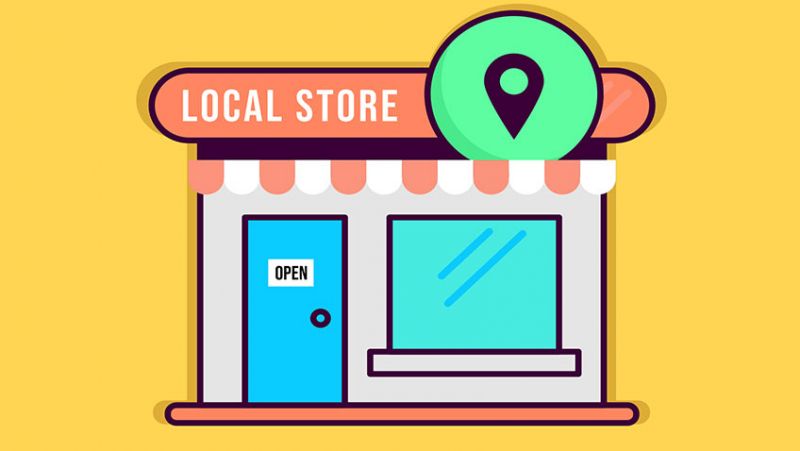
Advertising is the lifeblood of any small business, particularly in competitive markets like home improvement, interior design, and professional trades. Whether you're a DIY enthusiast turning passion into profit, a professional tradesperson, or a designer with a flair for transforming spaces, knowing where and how to advertise your business can have a direct impact on your visibility and sales.
In the UK, small business owners face a crowded marketplace. Standing out requires not only great products or services, but a solid marketing strategy that places your offering in front of the right audience—at the right time. In this guide, we’ll break down the most effective advertising platforms for small businesses and help you choose the best for your brand, budget, and business goals.
Understanding Your Target Audience
Before spending a penny on advertising, it’s vital to understand exactly who your customers are. Are you targeting homeowners looking to revamp their interiors? Are your ideal clients architects and interior designers sourcing new products? Or are you selling directly to professional tradespeople looking for reliable tools and materials?
Knowing your audience influences which platforms you use, what kind of messages will resonate with them, and how much you should spend. Take the time to create buyer personas detailing demographics like age, location (e.g., London vs. rural UK), spending habits, and their stage in the buying cycle. The more accurate your personas, the better your advertising will perform.
For example, young professionals in urban areas might respond well to visually striking ads on Instagram, whereas professional tradesmen may prefer the straightforward nature of Google Search Ads or even Facebook Marketplace.
Once you define your audience, you're in a better position to assess which platforms can best reach them effectively and affordably.
Top Advertising Platforms For Small Businesses in the UK
Each advertising platform has its own strengths, weaknesses, and ideal use cases. Let’s examine some of the most effective options for small businesses operating in the UK home improvement and design sector.
| Platform | Best For | Average CPC (Cost Per Click) | Pros | Cons |
|---|---|---|---|---|
| Google Ads | DIY Purchase Intent, Local Trade Services | £0.50–£2.00 | High intent traffic, Location targeting, Great for service-based businesses | Requires keyword research, Can be expensive in competitive niches |
| Facebook & Instagram Ads | Home Décor, Visual Branding, Promotions | £0.30–£1.00 | Highly visual, Precise targeting, Works well for storytelling | Lower purchase intent, Ad fatigue can happen fast |
| Pinterest Ads | Interior Design Ideas, Mood Boards, DIY Followers | £0.10–£0.50 | Good for long-term growth, High design appeal, Organic + paid strategy | Limited reach, Requires strong visuals and consistency |
| LinkedIn Ads | Architects, Design Professionals, B2B Services | £2.00–£5.00 | Professional audience, Thought leadership opportunities | High CPC, Not ideal for product-led campaigns |
| Local Print / Leaflet Drops | Tradesmen, Local Households, Small Towns | Variable | High visibility in target area, Easy to implement | No data tracking, Lower ROI, Higher waste |
Google Ads: Capture Active Buyers
Google Ads remain one of the most direct methods to capture purchase-ready users. If someone types “kitchen fitter in Birmingham” or “buy bathroom tiles online UK,” they are actively looking to buy. Google Search Ads help you meet them right at that moment.
You can also use Google Local Service Ads, especially if you're offering trade-based services like plumbing, tiling or bespoke joinery. This format shows your business at the very top of search results, complete with star ratings and contact buttons.
Google Ads can be incredibly effective, but it's crucial to monitor your results and test different campaigns. Use geographic targeting to narrow your ads to only the locations you can serve, saving your budget and boosting conversions.
Start with a small daily budget (£10–£20), and use conversion tracking with tools like Google Analytics to measure which queries are producing results. Over time, you can optimise and scale the campaigns that work best.
Facebook and Instagram Ads: Build a Visual Brand
With millions of active users in the UK, Facebook and Instagram remain powerful for small businesses—especially those in visually-led industries like design, DIY and home transformation. If your business has stunning before-and-after photos, customer testimonials, or product styling shots, social media ads can generate high engagement.
Set up Meta’s Ads Manager and define your campaign goals: brand awareness, website traffic, lead generation, or direct purchases. Target users by age, location, interests (e.g., Property Renovation, Interior Architecture), and behaviours.
Carousel ads, video stories, and reels can keep your content fresh. Don’t just promote products—use these platforms to educate, inspire, and tell your brand story. For instance, “How to Choose the Right Paint Finish” or “3 Ideas To Upgrade Your Home Office Space” can position your business as a go-to expert.
Monitor engagement rates (likes, saves, website clicks) and retarget those who visited your website but didn’t buy. It’s one of the most cost-effective ways to nurture leads into paying clients.
Pinterest Ads: Inspire & Convert DIY Enthusiasts
Pinterest is an underutilised advertising platform in the UK, yet it’s incredibly powerful for design-led businesses. More than 75% of UK Pinterest users are actively planning or dreaming about future projects—everything from mood boards for a kitchen redo, to practical guides on building garden decking.
If you sell decorative items, fixtures, or provide styling services, Pinterest is a fertile ground. Even better, Pinterest ads remain relatively low-cost compared to Google and Facebook, giving you a competitive edge while building long-term visibility.
Pins have a longer shelf life than content on other platforms. A single Pin might continue driving traffic to your product page or blog for months—even years. Incorporate rich pins and targeted keywords so that your ads show at just the right time in your prospective customer's discovery journey.
LinkedIn Ads: Reach Architects & Trade Professionals
If your products or services are targeted at industry professionals—such as architects, interior designers, and contractors—then LinkedIn can be an excellent choice. LinkedIn allows you to target by industry, job title, and company size, making it ideal for B2B advertising.
Use it to showcase your expertise with whitepapers, behind-the-scenes looks at projects, technical specs of materials, or case studies. LinkedIn Sponsored Content allows for strong visual storytelling, so include high-quality images and key benefits in your post overview.
The cost per click is typically higher on LinkedIn, but each click is highly qualified. This makes the platform more suitable for premium services and long-term business relationships rather than one-off consumer purchases. For example, a lighting designer targeting architecture firms with sustainable solutions could see strong returns over time.
Print Advertising & Leaflets: Local and Tangible
While digital advertising dominates, there’s still a solid case for traditional marketing strategies—especially when you’re trying to establish brand presence in local areas. Flyers, direct mail, and local magazine ads can help raise awareness in specific postcodes.
Tradespeople, such as kitchen fitters or electricians, can benefit hugely from distributing leaflets in neighbourhoods undergoing development or renovation. Add QR codes to encourage people to visit your website or call directly. Keep the design clean, with practical information up front—such as services offered, accreditations, and photos of completed work.
This method is inexpensive and can be paired with digital efforts. For instance, launch a Facebook ad campaign in the same postcode where you distribute flyers, reinforcing the message and encouraging cross-channel engagement.
Choosing the Right Platform for Your Small Business
There’s no such thing as a one-size-fits-all advertising platform. The best approach typically combines two or more methods to build awareness, capture leads, and convert customers across different touchpoints.
If you’re just starting out, keep it simple. Combine Google Ads for immediate lead generation with a visual platform like Instagram or Pinterest to build long-term brand equity. Track your results monthly and don’t be afraid to A/B test different messages, calls-to-action, and formats.
Focus on your strengths—beautiful visuals, expert craftsmanship, or unbeatable local service—and let that guide you to the right channels. Over time, with the right tools and some smart experimentation, advertising will become one of the strongest assets in growing your small business in the UK home improvement market.





